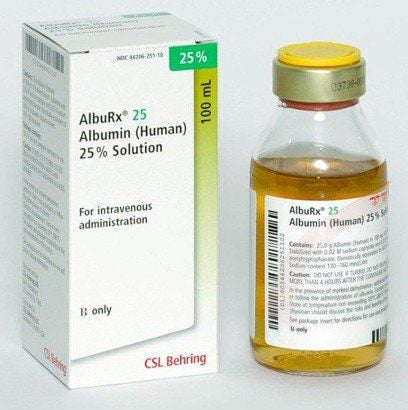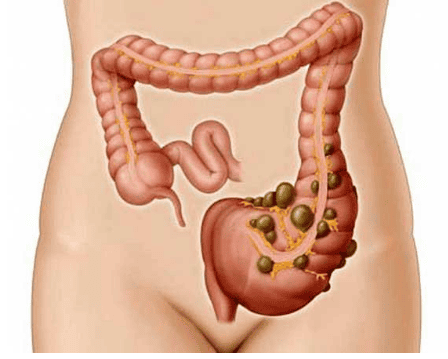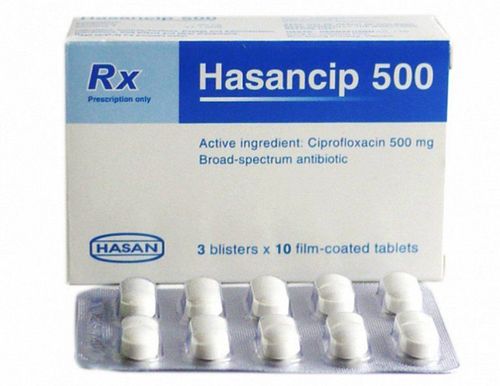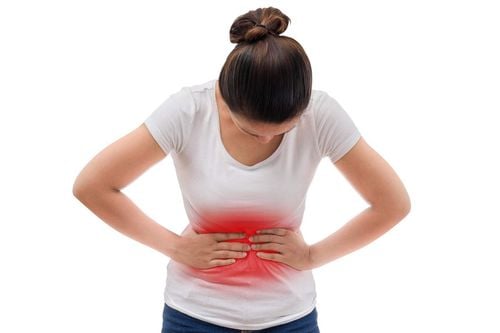This is an automatically translated article.
The article was written by Doctor Mai Vien Phuong - Department of Medical Examination & Internal Medicine - Vinmec Central Park International General HospitalTo understand colonic diverticulitis and diverticulitis, it is necessary to have a solid understanding of the anatomy and function of the intestine. The small intestine is a long, thin segment of intestine that begins in the stomach and ends in the large intestine or colon. The colon begins at the right iliac fossa, has the shape of a large question mark, crosses the entire abdomen and ends at the rectum.
1. Structure of the colon
The colon is divided into 3 main parts: the cecum, the colon and the rectum. The small intestine communicates with the large intestine at the cecum and colon boundary. Between the small intestine and the large intestine, there is an ileocecal valve that keeps the contents of the large intestine from flowing back into the small intestine.
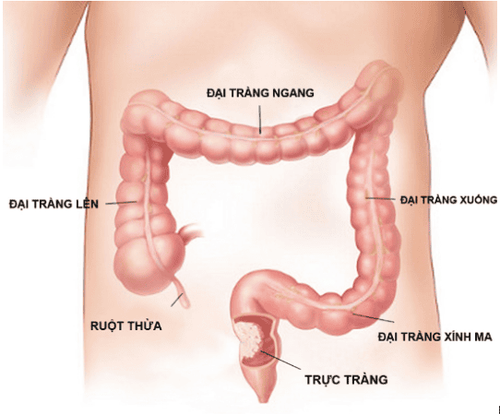
The cecum is shaped like a round bag, its location is just below the jejunum that empties into the large intestine. The cecum is linked to the appendix in a shape that closely resembles a finger. For an adult, the average height will fall about 9cm and the diameter is about 0.5 to 1cm.
The appendix is considered a remnant of evolution in humans and apes. The way to determine the stump of the appendix is that it is located midway from the navel to the right anterior superior iliac spine. Based on can determine if abdominal pain is appendicitis or not.
Colon As the main part of the colon, it is divided into 4 parts: ascending colon, transverse colon, descending colon and finally sigmoid colon. The ascending colon rises from the cecum up along the right side of the abdomen until it meets the liver where it bends called the right angle of the liver. It then becomes the transverse colon, passing across the abdomen.
As it approaches the spleen on the left side, it turns downward to form the descending colon at a bend called the left angle or angle of the pancreas. When it reaches the pelvis, it is shaped like an S to form the sigmoid colon. The colon is the first part of the large intestine, where waste products reach the sigmoid colon and rectum, where they are excreted.
Rectum After being bent twice, the sigmoid colon is connected to the rectum is a straight tube, about 15cm long and ends at the anus opening to the outside of the body. Consists of 2 sphincter muscles to control the opening and closing of the anus and rectum located behind the bladder in men and behind the uterus in women.
Just above the rectum is the sigmoid colon (S-shaped). Loose stools enter the right colon and as it moves through the colonic lumen, water is reabsorbed. Stool becomes thick, moldy as it reaches the rectum.
The sigmoid colon The sigmoid colon is responsible for strong contractions to maintain a high pressure. This will regulate the movement of stool into the rectum. Since the sigmoid colon is the most high-pressure and narrowest part of the colon, it is also the part of the colon that most often forms diverticula.
Diverticulosis Diverticulosis is characterized by bulging pouches from the colon. These vesicles swell slowly over long periods of time. They arise from natural weaknesses in the colon wall.
These small sacs develop due to the pressure exerted by the contraction of the colon. As mentioned above, because the sigmoid colon has the highest pressure, this is also the location where diverticula often form. Because of these bubble-like aneurysms, the sigmoid colon often becomes thickened and narrowed. This will cause significant changes in bowel function, such as abdominal pain, diarrhea, or constipation.
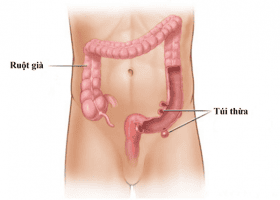
2. Who often suffers from diverticular disease?
Because the formation process takes a long time, diverticular disease is common in the elderly. However, cases occurring in the age of 30 or older are not uncommon. Sometimes the colon, especially the sigmoid colon, is filled with diverticula. This disease is common in Western societies.
The disease is very rare in rural areas of Africa or India. Food in these regions often consists of unprocessed foods and nuts that are rich in fiber. Therefore, a high-fiber diet is very beneficial for disease prevention.
Symptoms of diverticulitis
When diverticula begin to form, there are usually very few symptoms, except for occasional contractions in the left iliac fossa. As diverticular disease progresses, the lower colon may become less mobile, deformed, and narrowed.
At that time, stools are often thin and small in the form of pellets, constipation, sometimes accompanied by episodes of diarrhea. When mechanical and structural problems arise, treatment becomes more difficult.
3. Complications of diverticular disease
The complication rate of diverticulosis is relatively low. However, serious complications can still occur. Diverticulitis is the most common complication.Diverticulitis Like a balloon, the diverticulum expands, becoming thinner than the rest of the colon. The colon is home to many beneficial bacteria while they are still in the colon. However, these bacteria can penetrate the thin wall of the diverticulum and cause an infection, a condition called diverticulitis. Mild inflammation causes only mild pain in the left iliac fossa. If the inflammation is severe, it will cause a lot of pain and fever. Diverticulitis needs to be treated. You will need antibiotics and fasting, sometimes even drinking, to give the colon a rest. In severe cases, the patient needs to be hospitalized.
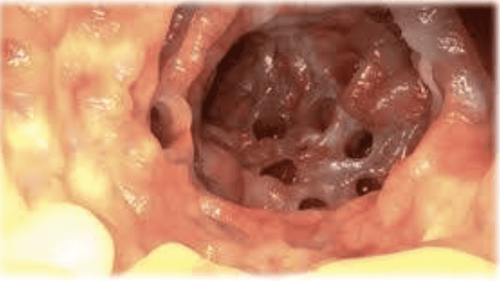
Bleeding Hemorrhagic complications occur due to rupture of a blood vessel in the colonic diverticulum. Fresh blood profusely from the anus or sometimes dark, mahogany stools, when bleeding occurs in the right colonic diverticulum.
Perforated diverticulum This complication is rare, but it is the most serious complication. Bacteria from the colon escape into the abdominal cavity causing peritonitis or abscess. In most cases, abdominal surgery is required to solve the problem.
Please dial HOTLINE for more information or register for an appointment HERE. Download MyVinmec app to make appointments faster and to manage your bookings easily.
References:
Le Huy Luu, Nguyen Van Hai (2010), "Results of right colonic diverticulum surgery by laparoscopic surgery", Medicine of Ho Chi Minh City, volume 14 (additional to no. 4), p.12-15. Ly Minh Tung, Nguyen Van Hai (2011), Clinical features, images, and surgical results for diverticulitis. Aldoori W.H., Giovannucci E.L., Rockett H.R., et al. (1998), "A prospective study of dietary fiber types and symptomatic diverticular disease in men", J Nutr, Vol.128 (4), p.714-719. Ambrosetti P., Robert J.H., Witzig J.A., et al. (1994), "Acute left colonic diverticulitis: a prospective analysis of 226 consecutive cases", Surgery, Vol.115 (5), p.546-550.





